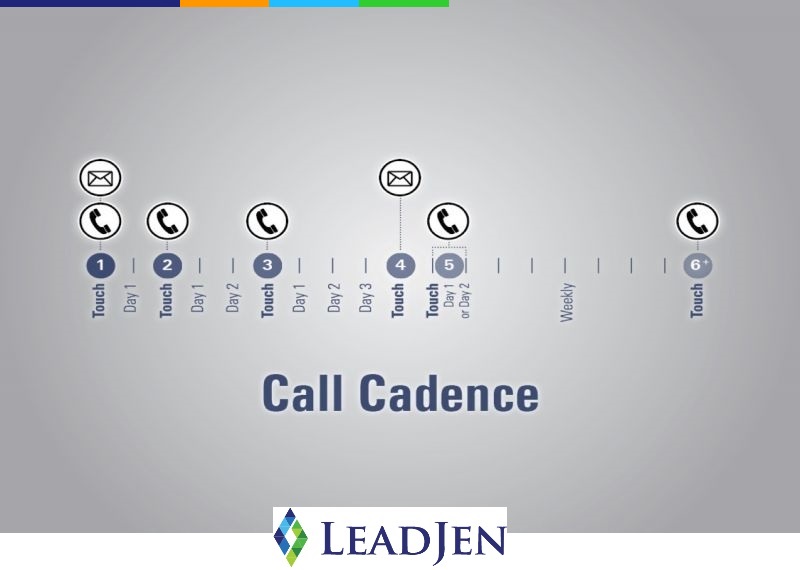

In lead generation, cadence is paramount

Written by Jenny Vance
When developing a lead generation program, sales managers and business owners often spend a lot of time crafting the perfect message and call script. They will analyze every word and debate nuances with the goal of making the greatest impact on prospects.
The calling cadence is perhaps even more important because
of its ability to pinpoint what’s working in a calling campaign, and what’s not working.
A calling cadence maps out the frequency and duration of communication, as well as the type of communication attempt. For example, a calling cadence may specify an email and follow up phone call during the first day, a second phone call the following day, then stretching out interactions as the campaign progresses (see chart).

The structure of a calling cadence gives managers important information about what is working and why. Without a cadence, contacts passed to sales reps for follow up are treated inconsistently. One sales rep may make several phones calls the first day and then drop the lead. Another may send an email first and then call every day for a week. A cadence imposes a structure on sales reps that allows managers to see which tactics work and then tweak the right mix to achieve the best result.
A calling cadence also allows managers to easily see where diminishing returns begin and realign efforts based on this insight to make the effort highly efficient. For example, if only 5 percent of appointments are set after the fourth call attempt, it might make sense to stop after three attempts. However, if that same 5 percent results in the highest close rate and the largest deal sizes, it makes sense to invest in a cadence with a longer duration.
Developing a calling cadence that works takes just five steps:
1. Develop a professionally persistent cadence. Create a lead generation cadence that includes of mix of communication channels (email, voice mail, calling) that are spaced out in a professionally persistent cadence. Start interactions close together and space them out over the duration of the campaign. Insist that all reps use the cadence and record their results.
2. Measure the success of the cadence at each step. As the cadence progresses, managers can see the volume produced at each step, where the largest deals are entering the funnel, and when to end the campaign. Measure the results at each step to gain insight into both the quantity of leads and their quality. This will be different for each company and campaign. Measurement is much easier if the cadence is automated using a solution that allows sales reps to easily record outcomes.
3. Build a cadence you can afford. Your cadence should reflect the type of product or service you’re selling. In general, lower cost, commoditized products and services should have a shorter calling cadence, while higher cost solutions can afford longer campaigns. This is because lower cost solutions rely on a high volume of leads to achieve return on investment, while higher cost solutions often benefit from extending the cadence for harder to reach prospects.
4. Make sure the volume is manageable for the cadence. Large lists often make calling cadences difficult to maintain. Divide lists into smaller data sets that will allow reps to call through an entire list in one day. This typically is a list of 30 to 50 names. Dividing lists also allow reps to manage multiple lists in the same week, which builds a pipeline of leads in all phases of the sales cycle and makes managing the lists easier.
5. Allow the cadence to work. Typically five to six weeks is enough time to get a sufficient number of prospects (100 or so) through the program to draw meaningful conclusions. Once finished, evaluate the cadence and make decisions for improvement. Look at how reps connect with prospects and which attempts work best. Change future cadences based on what you learn.
The structure of a calling cadence ensures that all reps are using the same tactics, which makes measurement possible and insights easy to obtain. Before long, your lead generation campaigns will be both efficient and robust.
